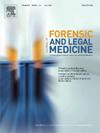A comprehensive LC-MS/MS method for simultaneous analysis of 65 synthetic cannabinoids in human hair samples and application to forensic investigations
Abstract
Synthetic cannabinoids (SCs) represent a diverse class of new psychoactive substances characterized by extensive substance variety and severe abuse implications. The current situation of synthetic cannabinoid abuse in China is getting worse, with an increasing number of SC variants emerging. Therefore, it is imperative to improve synthetic cannabinoid detecting methods to align with the prevalent abuse situation in the region. In this study, a reliable and validated liquid chromatography-tandem mass spectrometry method was developed for the qualitative and quantitative analysis of 65 SC analogues in human hair samples. The validation results demonstrated satisfactory linearity (r ≥ 0.99) within the range of 25–2500 pg/mg for each SC analogue. The method exhibited limits of detection ranging from 10 to 15 pg/mg and limits of quantification ranging from 25 to 40 pg/mg. The relative standard deviations of intra-day precision and inter-day precision were below 15 %. Furthermore, negligible matrix effects were observed, with recovery rates ranging from 85.70 % to 119.43 %. Analysis of abuser demographics revealed that the primary group engaged in SC analogue abuse consisted of adolescents, predominantly males, accounting for 79.5 % of cases. Among the suspected individuals, ADB-BUTINACA and MDMB-4en-PINACA were the most frequently detected substances. The present study develops a highly sensitive analytical method and provides a comprehensive overview of the prevalence of SC abuse in the eastern region of China.

 求助内容:
求助内容: 应助结果提醒方式:
应助结果提醒方式:


